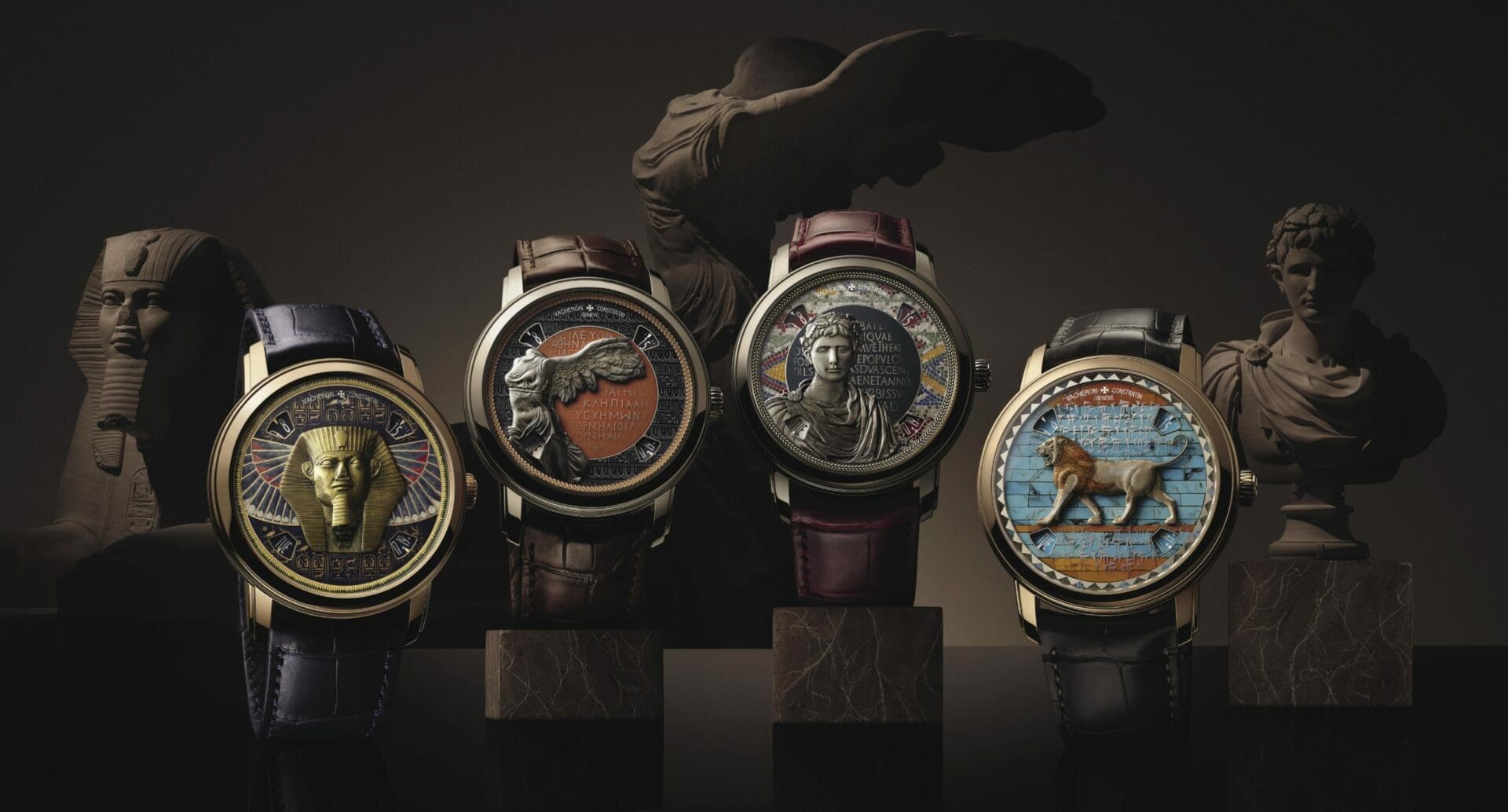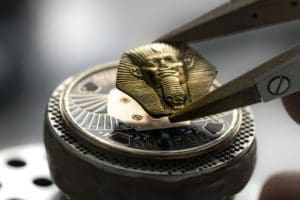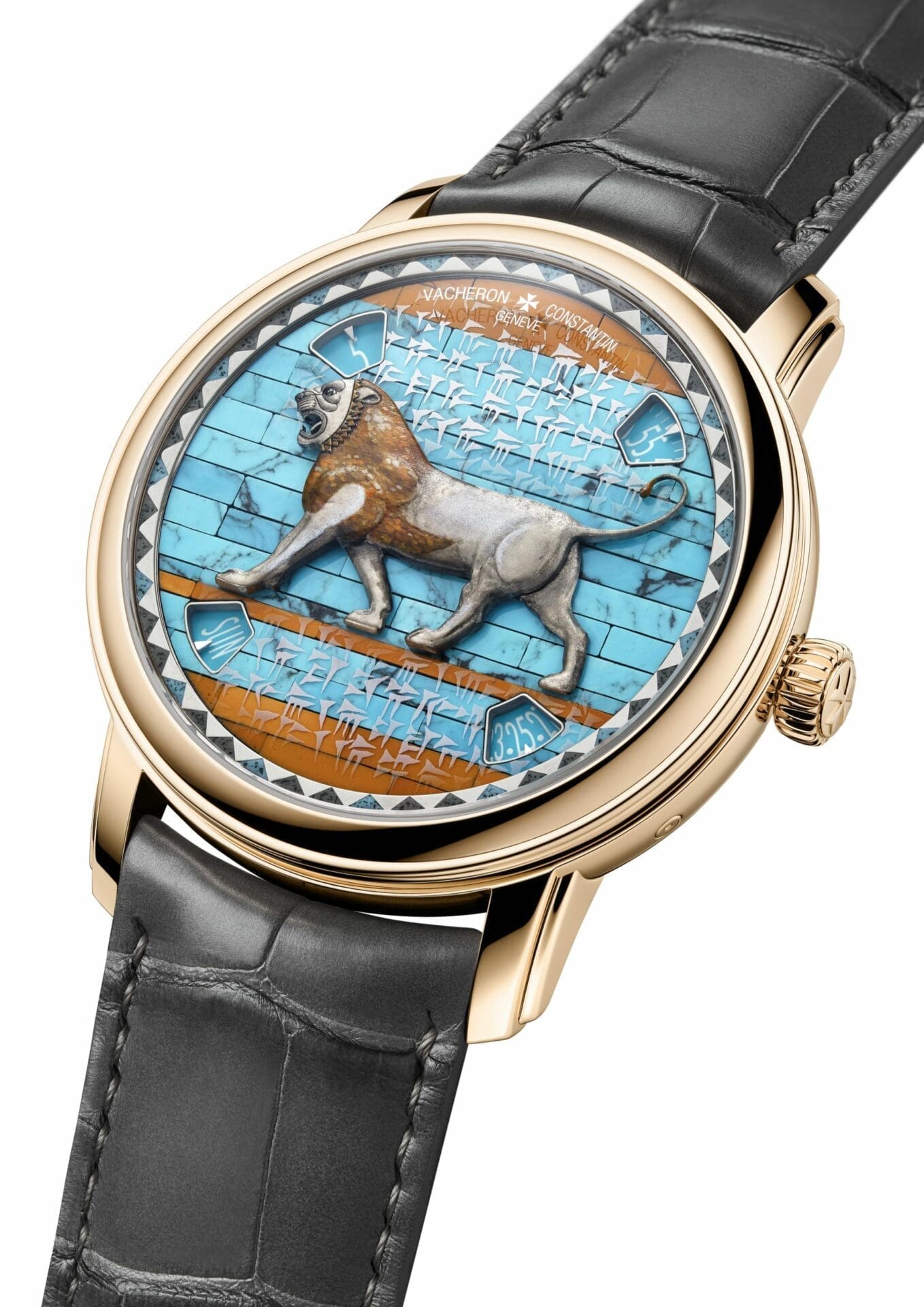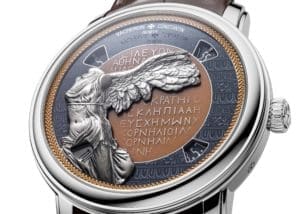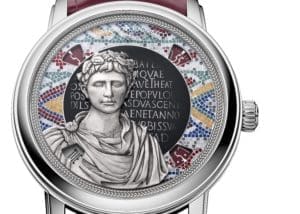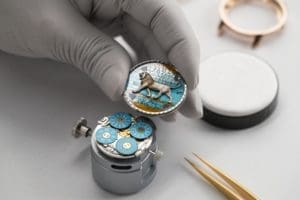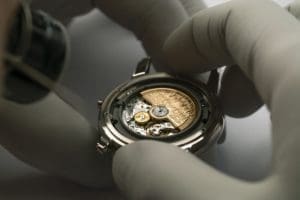HANDS-ON: The Vacheron Constantin Métiers d’Art Tribute to Great Civilisations
Fergus NashIt’s easy to throw the phrase “museum quality” around when talking about haute horology timepieces, as a multitude of brands are capable of the high-art techniques required to earn that label. However, no matter how many time-consuming handmade techniques a brand perfects, only a brand like Vacheron Constantin are able to reproduce actual historical artworks from within the Louvre’s collections. The Métiers d’Art Tribute to Great Civilisations does as its name suggests, honouring some of history’s most important cultural hubs with four watches bearing an emblematic sculptures on the dial.
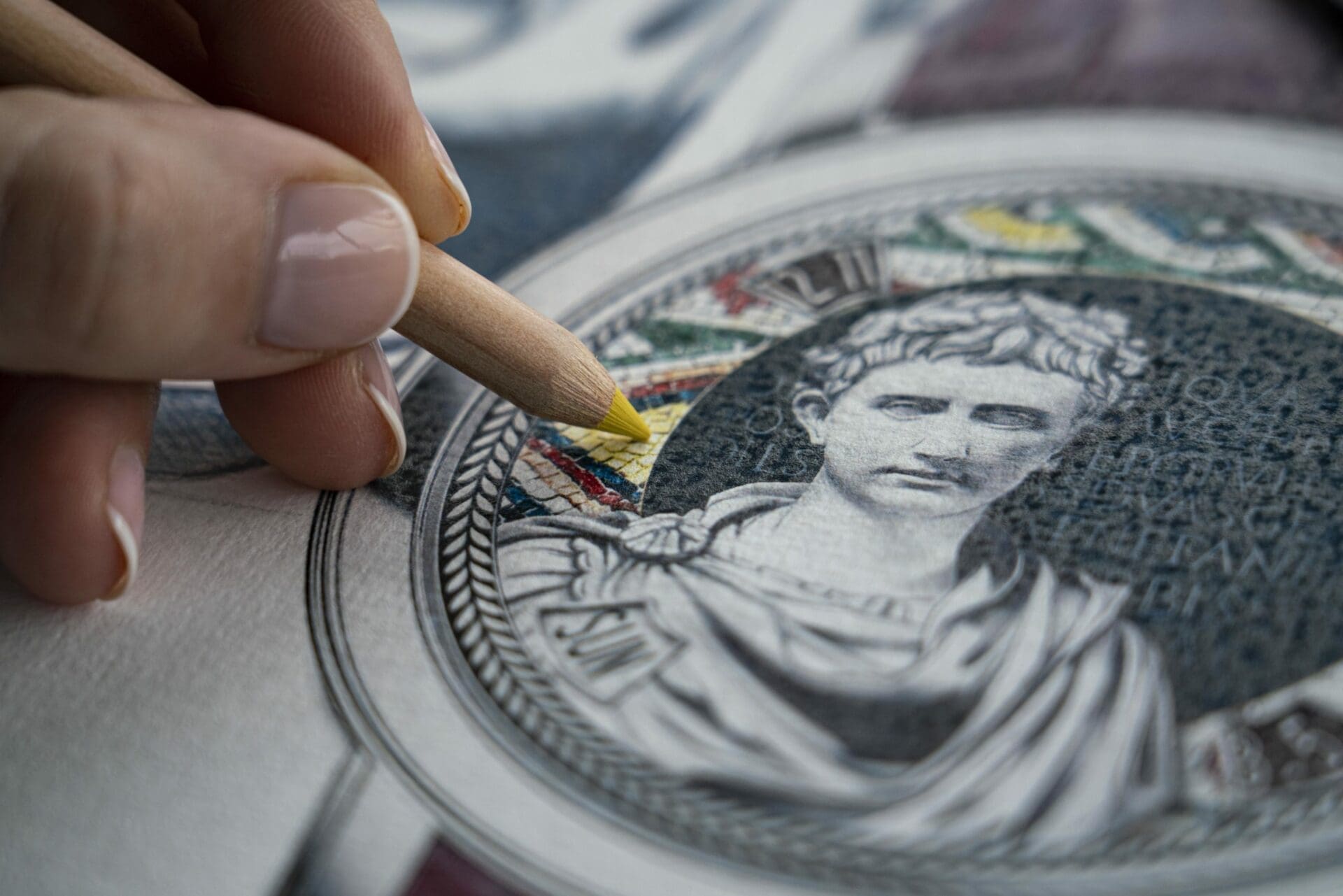
The partnership between Vacheron Constantin and the Louvre Museum began in 2020 after the Swiss brand helped restore an 18th century clock owned by King Louis XV, and their first collaboration was an incredible one-off concept. The winner of a Christie’s auction lot was given the chance to wander around the Louvre, choosing any single exhibit to be reproduced within a bespoke Vacheron Constantin — with the exception of the Mona Lisa. This new collection makes the choice of representing four ancient cultures that have changed the course of human history: Persia, Egypt, Greece and Rome.
The dials
Persia – Lion de Darius
The first honour is paid to Darius the Great of Persia, with the recreation of a carved frieze that stood at the gates of his palace in Susa. The designers have recreated the glazed brickwork as the backdrop of the dial, with stone marquetry forming the vivid blue and orange hues that are punctuated by swirling black marks. A sapphire layer above the stone shows cuneiform text, giving a puzzle to the watch’s owner should they wish to attempt a translation of the ancient writing. The white-gold lion engraving is given a slight patina to symbolise the age of the work, standing even prouder on this dial than it does on the real wall.
Egypt – Grand Sphinx de Tanis

The next watch is perhaps the most instantly recognisable, proudly depicting the Sphinx of Ancient Egypt. Surrounding the golden visage are intricate enamelled falcon wings, pulled directly from the top of Nakht-khonsou-irou’s sarcophagus. Similarly to the cuneiform of the previous watch, golden hieroglyphs are also placed around the dial on a sapphire layer. The sumptuous blue and gold colour scheme highlights the wealth of Ancient Egypt’s hidden tombs, and the face of the Sphinx appears to stare directly into yours.
Greece – Victoire de Samothrace
Ancient Greece is the birthplace of modern democracy, theatre and philosophy as we know it today, and the Winged Victory of Samothrace is one of the Louvre’s most treasured relics from this era. Presented off-centre above a display of Ancient Greek text and decorative vase patterns, the headless sculpture exudes the immense power of the goddess Nike. The engraving is just as impressive as the marble work itself, able to capture both flowing fabric and anatomically perfect skin.
Rome – Buste d’Auguste
Finally, the fourth watch pays tribute to Ancient Rome, one of the first global superpowers. Capturing the sophisticated side of Roman culture, a micro-mosaic dial paves a winding pathway of decoration below another off-centre engraving of the bust of Caesar Augustus, the man who reformed the Roman Republic into the Roman Empire. The multicoloured array of stone fragments seem to pull the viewer back in time, reminding us that the pure white marble we’re used to seeing was actually once painted vibrantly.
The case
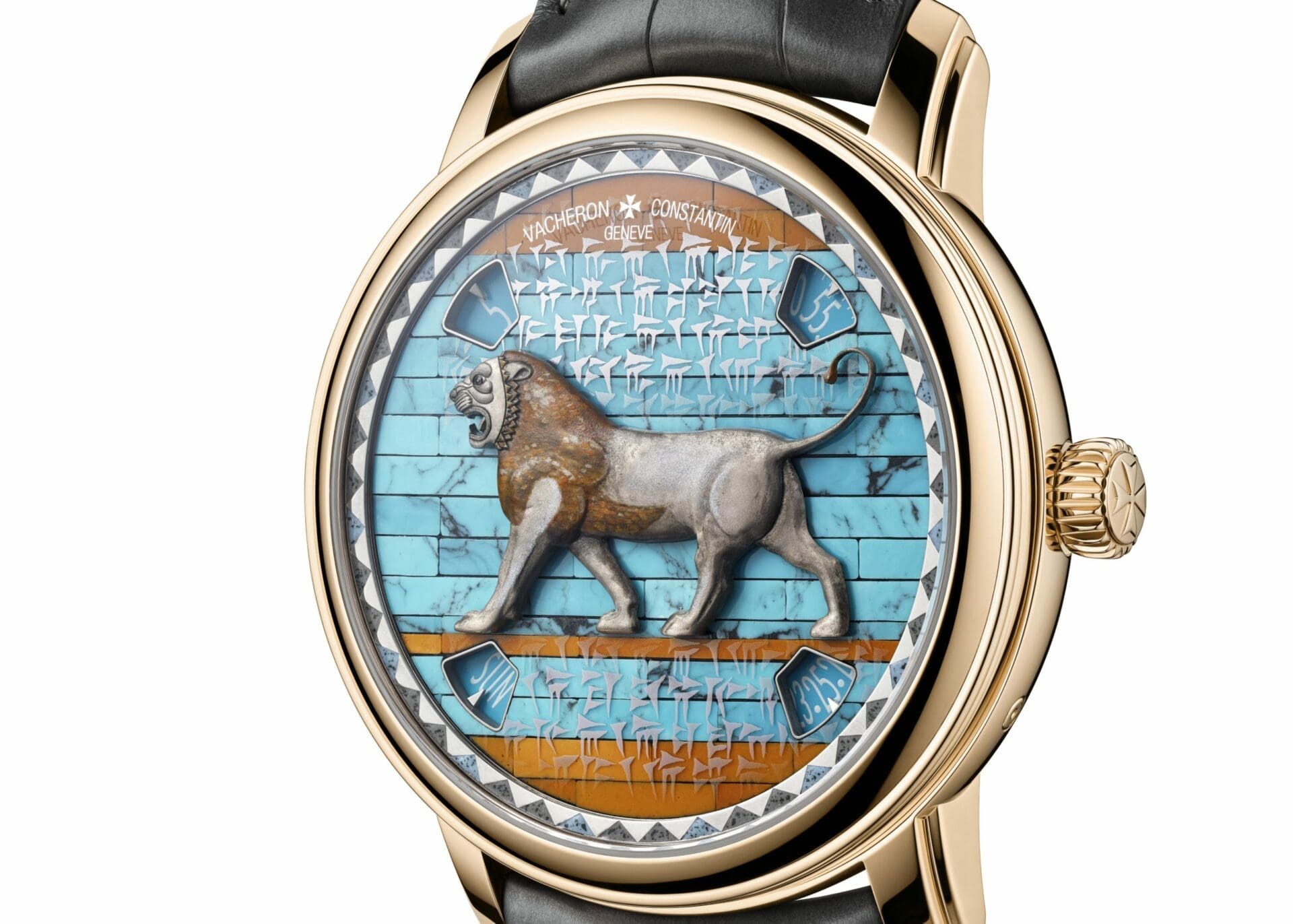
Let’s be honest, you’d need to be staring at these watches for a long time before you’re able to concentrate on anything other than the dial, however the Mona Lisa wouldn’t be anywhere without its frame. Measuring 42mm in diameter, the cases are made of either pink or white gold depending on the model. The smooth-polished bezel has a slight step towards its edge, mirroring the stepped lug design that imposes a rather Art Deco aesthetic onto the watch. The class it brings to the whole picture is equally as proud as the Louvre itself, housing an artwork in a well-planned exhibit.
The movement
You may have noticed a distinct lack of hands on these watches, leaving traditional time-telling out of the question. In four corners of the dial, cutouts have been made to display the hours, minutes, day, and date in a jump-hour style complication. The automatic calibre 2460 G4/2 is just as artful as the dial, with classical intricate finishing and construction worthy of the Hallmark of Geneva — a certification granted only to exceptional timepieces since 1886. A power reserve of 40 hours and a beat rate of 28,800 vibrations per hour might not sound all that special, however this watch isn’t likely to be worn daily. The winding rotor is made of solid gold, and its deep-relief engraving depicts an 18th-century lithograph of the Louvre’s Eastern façade.
The Vacheron Constantin Métiers d’Art Tribute to Great Civilisations pricing and availability:
Vacheron Constantin have not revealed a price for the Métiers d’Art Tribute to Great Civilisations collection, although it is safe to assume the number will run into six figures given their previous releases. Each reference from this collection will only be produced five times, creating a total of 20 exclusive watches that could easily be owned by watch and art collectors alike.
| Case Material | 18k White or pink gold |
| Case Dimensions | 42mm x 12.9mm |
| Water-Resistance | 30m |
| Dial | Persia, Egypt, Greece, Rome |
| Straps | Alligator leather |
| Movement | Calibre 2460 G4/2 |
| Power Reserve | 40 hours |
| Complications | Hours, minutes, day, date |
| Price | Price on request |




